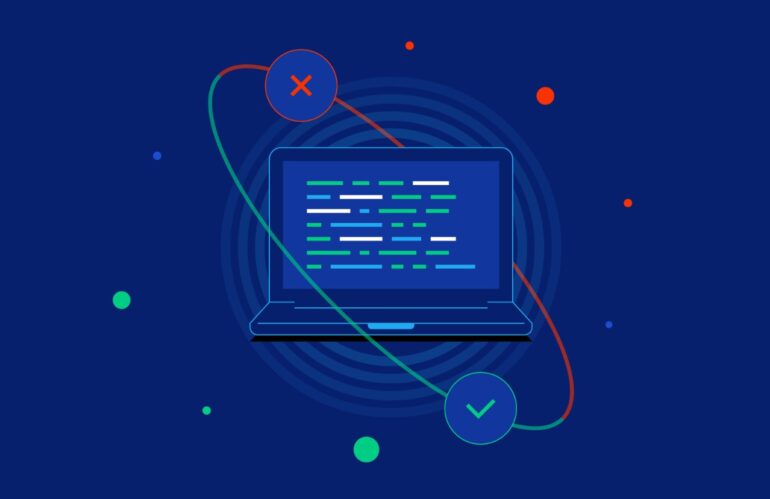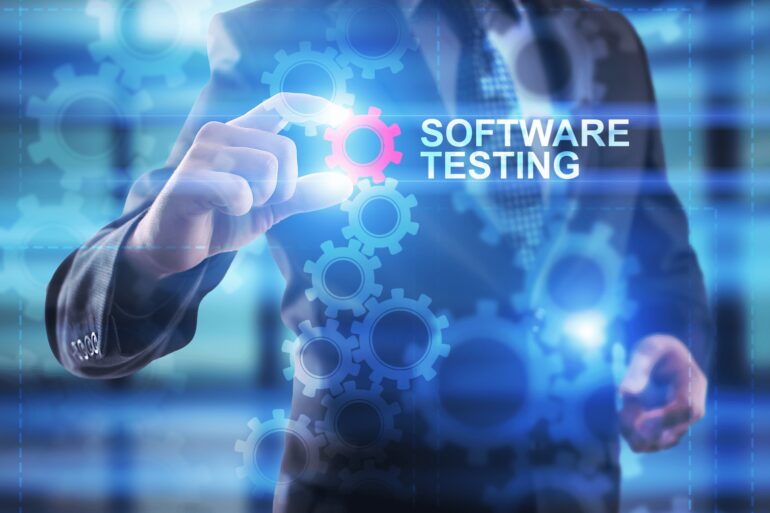In the initial phases of the design process, it becomes imperative to define measurable objectives pertaining to product specifications to ensure alignment with the intended usage requirements. Validation and verification, when instituted early in the product development journey, serve as guiding principles to keep the process steadily advancing toward the ultimate goal of producing, launching, and marketing a successful product while maintaining cost-effectiveness. Browser testing should be incorporated to reduce time and speed up work.
However, even seasoned professionals in design and manufacturing may occasionally need clarification on the relationship between verification and validation testing. In this context, we aim to elucidate key considerations when implementing these two critical processes, both integral to the efficacy of product design.
What Is Verification Testing?

In the initial phase, known as Phase Zero, of the product development process, it is crucial to maintain ongoing confirmation that the proposed design aligns with the established requirements and specifications for the final product.
Commencing the project on the right footing is essential, but equally important is having a strategy in place to consistently validate the precision of measurements for each component within the design. This ensures that the ultimate product will operate as intended.
This proactive approach helps avert the need for a comprehensive redesign. Such a strategy, which encompasses specific testing and assessments to be carried out at defined intervals, is referred to as the verification process.
What Is Validation Testing?
Prior to introducing most products to the market, it is essential to demonstrate their functionality. This entails conducting validation testing on a prototype or a sample from the initial production run.
Validation testing can be achieved by either creating simulated environments closely mirroring the conditions in which the product will be used or by deploying the product in its actual usage environment. Testing carried out under conditions that closely resemble the intended use ensures that the right product has been constructed for its designated purpose.
While validation testing is primarily conducted on the final product, to avoid costly revisions, it is advisable to integrate the methods of validation testing, as detailed in the following section, whenever feasible during verification testing.
Implementing Verification and Validation Testing in the Product Development Process
The verification testing process encompasses the fundamental stages of the design process and incorporates the utilization of evaluation testing methods:
- Planning: This phase involves defining design objectives and specifications and scheduling the frequency and types of tasks required to confirm that product development aligns with the plan. The plan should be structured to incorporate the core methods of validation testing outlined below.
- Execution: It involves launching the design process and executing the verification tasks as per the plan’s schedule during the development stages, while also considering the inclusion of validation testing methods listed in the following section.
- Reporting: This phase entails compiling the outcomes of the analysis conducted at various development points to establish that the objectives are consistently being met.
The validation testing process is ideally integrated into the verification process by scheduling tasks based on these primary validation methods:

- Analysis: Assessing the product’s design and performance.
- Inspection: Evaluating the product’s components and performance.
- Demonstration: Conducting tests to verify that the product functions as expected.
- Physical Testing: Performing real-world experiments to confirm that the product operates as intended.
- Simulation: Carrying out digital or condition-matching experiments to closely mimic the product’s intended usage conditions.
A cloud-based testing platform like LambdaTest keeps its infrastructure up to date with the latest browser versions and OS releases. LambdaTest is an AI-powered test orchestration and execution platform to run manual and automated tests at scale. The platform allows you to perform both real-time and automation testing across 3000+ environments and real mobile devices.
This ensures that your tests are conducted on current platforms, improving the quality of your testing. It also provides customer support and training resources to help users make the most of the platform. This support ensures that you can use LambdaTest efficiently, reducing the learning curve.
By combining these features and practices, LambdaTest can effectively balance cost-efficiency and high-quality software testing, making it a valuable tool for testing teams and organizations.
Three Tiers of Testing and Validation Sophistication
In our interactions with clients, we have observed distinct levels of sophistication when it comes to validation and testing procedures:
Function-Centric
- Companies at this level lack coordinated planning for testing and validation, both within and across functional departments.
- The absence of coordination leads to a surplus of tests, many of which are repetitive and unnecessary.
- Ad hoc testing and validation typically occur toward the conclusion of the development process, primarily due to limited integration and parallelization.
- Companies often resort to physical tests on components or the overall product and have limited reliance on virtual simulations.
- Test results often represent outdated development stages due to ongoing engineering progress over weeks or months, rendering these results only partially valid.
Early-Stage Integrator
Recognizing the deficiencies in the function-centric approach, some companies enhance coordination and planning within and between functional units.
- They formally integrate testing and validation at various quality gates or project milestones.
- Distinct testing processes are established for parts, components, and systems.
- Integration of test scenarios at gates and milestones helps reduce the need for physical tests.
- A blend of virtual and physical tests is employed, focusing on performance requirement fulfillment.
- While they conduct testing at the component and system levels, complete integration and customer feedback integration tend to occur in the later stages of development.
They primarily adopt an inward-facing outlook, concentrating on internal projects and products, with limited consideration for integrating testing processes with value chain partners.
Advanced Integrator

Leading companies adopt a forward-thinking approach to testing and validation.
They embrace a vision of hardware-free product development, similar to practices adopted by certain companies, especially in low-volume industries, to mitigate the high costs associated with comprehensive product tests.
These advanced integrators follow a well-defined strategy:
- Planning testing and validation scenarios across functions and value chain stages.
- Early integration of customer-oriented testing and validation procedures in the development process
- A clear demarcation between testing for parts, components, and systems minimizes the number of physical tests.
- Gradual progression in testing, covering components, systems, modules, and final assembly
- Extensive utilization of virtual simulation, with virtual testing serving as a prerequisite for any physical tests.
- A transformation of product development processes (PDPs) by incorporating virtual simulation loops alongside robust feedback and improvement loops at each testing stage
- Adoption of a modularization approach to minimize virtual tests and eliminate redundancy
Often, centralized responsibility for testing is instituted to leverage prior results and efficiently manage the remaining physical prototypes and testing equipment.
Develop a Comprehensive Plan
The initial and integral phase of system integration testing and validation necessitates the creation of a thorough plan, subject to continuous review and adjustments as required. The presence of a well-defined plan serves as a foundational element to ensure that testing and validation procedures are executed within the prescribed timeline and budget constraints.
- Identify the components or systems requiring integration.
- Define the interfaces that facilitate interaction between these components or systems.
- Specify the criteria essential for the successful validation of the system.
- Recognize the stakeholders involved and delineate their respective needs.
- Enumerate the test cases slated for execution.
- Determine the requisite test environment, encompassing both hardware and software components.
- Identify the resources indispensable for the process, encompassing personnel and equipment.
- Establish a structured schedule for conducting the tests.
Clearly Define Acceptance Criteria
Acceptance criteria constitute the essential prerequisites for project success. Crafting precise acceptance criteria guarantees that the final product aligns with the requirements of both customers and other stakeholders.
- Acceptance criteria for testing should encompass the functionality of interfaces between distinct components or systems as well as the overarching behavior of the integrated system.
- Acceptance criteria for validation should encompass both the functional and non-functional requirements of the system.
- These criteria should exhibit specificity and measurability, closely adhering to the system’s requirements and the expectations of stakeholders.
- Regulatory, compliance, or industry standards that the system must adhere to should also be included within the acceptance criteria.
Commence Testing Early and Regularly

Initiating testing as early as possible within the development process and sustaining a continuous testing regimen throughout the project’s lifecycle prove indispensable. This proactive approach ensures that any issues are promptly identified and addressed, thereby mitigating the risk of challenges becoming more complex to rectify.
Simultaneously, it aids in reducing the overall expenditure of time and resources associated with testing and validation.
- Embark on system integration testing and validation early in the development process to detect issues promptly, averting potential complications.
- Maintain a consistent cycle of testing and validation throughout the development process, thereby ensuring that any modifications introduced do not introduce new challenges.
- Employ a spectrum of testing methods, combining manual and automated approaches, to ensure comprehensive coverage.
- Automation expedites the execution of test cases, whereas manual testing delves into aspects of integration that may pose challenges for automation.
- Functional testing confirms the system operates in alignment with its intended functionality.
- Performance testing gauges the system’s ability to withstand expected loads and usage patterns.
- Acceptance testing ensures the system satisfies stakeholder requirements, including those of customers.
- Consider employing diverse integration testing types such as top-down, bottom-up, and sandwich approaches.
Methodically Document and Track Issues
- The meticulous documentation and tracking of issues discovered during testing play a pivotal role in ensuring their timely resolution. This tracking process not only facilitates swift issue resolution but also provides valuable insights into potential systemic problems, thus enhancing testing and validation processes over time.
- Maintain comprehensive records of any issues unearthed during testing or validation, offering detailed descriptions of the problems, steps for reproducing them, and relevant log or error messages.
- Assign priority levels to each issue and vigilantly track them until they are satisfactorily resolved.
- Utilize a dedicated bug-tracking system to efficiently manage and monitor issues, ensuring none slip through the cracks.
Continuously Enhance Practices

- A commitment to ongoing evaluation and improvement is instrumental in sustaining effective and efficient testing and validation processes.
- Consistently assess the integration testing and validation processes to identify areas ripe for enhancement.
- Employ metrics to gauge the effectiveness of the testing and validation procedures, pinpointing areas necessitating additional scrutiny.
- Draw upon lessons derived from prior testing and validation cycles to refine test cases, environments, and data.
- Maintain awareness of the testing and validation tools and technologies in use and consider the adoption of new tools and technologies to streamline the process.
Maintain the Testing and Validation Environment
Preserving the integrity and consistency of the testing and validation environment is paramount. This ensures that all essential data remains accessible and accurate, enabling the swift reproduction and resolution of issues detected during testing.
- Uphold the testing and validation environment by ensuring that both hardware and software components are up-to-date and properly configured.
- Maintain a reliable backup of the testing and validation environment and associated data to facilitate rapid restoration in case of issues.
- Enforce strict isolation between the testing and validation environment and the production environment to safeguard against inadvertent alterations to the production system.
- Thoroughly document the testing and validation environment and its data, encompassing hardware and software configurations.
Conclusion

Software testing is not a rigid or unchanging process; instead, it’s a fluid and progressive discipline that demands ongoing education and adjustment. It’s imperative to stay current with the most recent trends, technologies, and methodologies in the realm of software testing and assess their relevance and appropriateness to your particular project.
Additionally, you must be prepared to welcome change and navigate uncertainty, demonstrating adaptability and agility in your responses to the evolving demands, anticipations, and complexities inherent in a software project.
